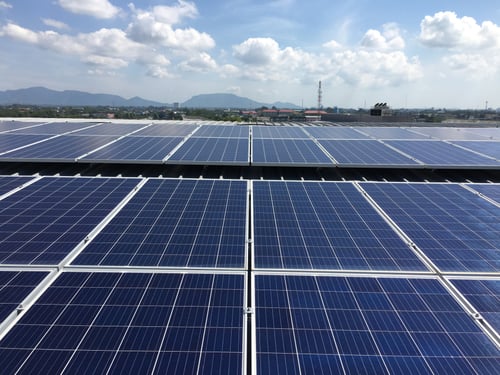If you've read articles and news about the energy sector, you've certainly come across a metric called the Levelized Cost of Electricity (LCOE). By synthesizing the performance of an energy generation project into a single value, LCOE is one of the most used metrics in energy generation. Unfortunately, it is often misunderstood or used incorrectly.
LCOE combines engineering and financial principles. In simple terms, LCOE is the break-even price for electricity production from a generation system, assuming all project cash flows are brought to present value – it is the price at which project costs and benefits are equal. in current dollars.
- If LCOE is calculated for a power generation project that sells electricity, it is the minimum selling price to reach break-even (Net Present Value = 0).
- On the other hand, when calculated for a self-generation project, LCOE represents the minimum savings per kilowatt-hour at which the project reaches break-even.
However, LCOE cannot replace a detailed feasibility study with cash flow projections. It describes project costs in net present value, but does not provide information about how these costs are distributed over the project life cycle.
Identify the best energy generation option for your building.
LCOE values are useful for quickly comparing different power generation projects. However, a feasibility study with a detailed cash flow projection is strongly recommended before investing in a specific project.
Avoiding Common Mistakes When Using LCOE
A common mistake in self-generation projects is to assume that the system will pay for itself with savings just because the LCOE is lower than the price of electricity. Although this indicates that the net present value is positive, you should not assume that savings are achieved immediately.
The following example shows how incorrect use of the LCOE value can lead to unrealistic savings calculations:
- Suppose the owner of an industrial facility is considering a solar power system with a capacity of 2 megawatts (2,000 kW).
- With sunlight conditions at the project site, the solar photovoltaic array can provide 2.8 million kilowatt-hours per year.
- The project's LCOE is US$0.08/kWh, while the electric company charges US$0.15/kWh.
- The project cost is US$2,000,000, which will be financed with a loan. The annual interest rate is 5% and the repayment term is 10 years.
- With these loan terms, the annual payment for the first 10 years is $254,557.24.
Based on LCOE alone, a building owner may get the wrong impression about project savings. Since the LCOE is $0.08/kWh and the project is saving $0.15/kWh, one might come to the wrong conclusion that the project immediately saves $0.07/kWh. With 2.8 million kWh produced per year, this would translate into savings of $196,000. However, this is not the case.

Consider that LCOE is based on the total cost over the life of the project, typically 25 years for a solar energy system. However, there is a loan to pay during the first 10 years:
- With a loan payment of $254,557.24 and production of 2.8 million kWh, the average cost is $0.09/kWh over the first 10 years. This is greater than the LCOE.
- There are also maintenance expenses and insurance expenses, which bring the average cost to about $0.10/kWh.
- Note that project costs drop dramatically when the loan is paid off, which is why the LCOE has a lower value.
The project does not save $0.07/kWh immediately. The net savings are closer to $0.05/kWh when you consider that the costs are not evenly distributed and there is a loan to pay off over the first 10 years. A more accurate savings estimate for year 1 would be $140,000 rather than the $196,000 value based on LCOE.
In the example above, the project achieves immediate savings, but owners should be extremely careful if the LCOE value is only slightly lower than the electricity tariff.
- If this same project is being considered by a customer who pays $0.09/kWh to the power company, the project has a net loss of $0.01/kWh while the loan is being repaid.
- Unless the customer is willing to wait 10 years before seeing electricity savings, the investment is not attractive.
Recommendations for building owners

A power generation system for a building is an excellent way to reduce energy costs, but you need to ensure that the financial performance is favorable. The best recommendation is to obtain a detailed evaluation of your property by a qualified engineering firm and request a feasibility study that includes an annual cash flow projection.
LCOE is very common in energy news because a single cost-per-kWh figure is easier to understand than a detailed financial analysis. LCOE is a useful tool when comparing energy sources upfront, but you should not use it to estimate the actual cash flow and savings on a power generation project. Just as Net Present Value (NPV) is not equivalent to the actual cash flow achieved by a project, LCOE does not describe the actual project costs for each year.

